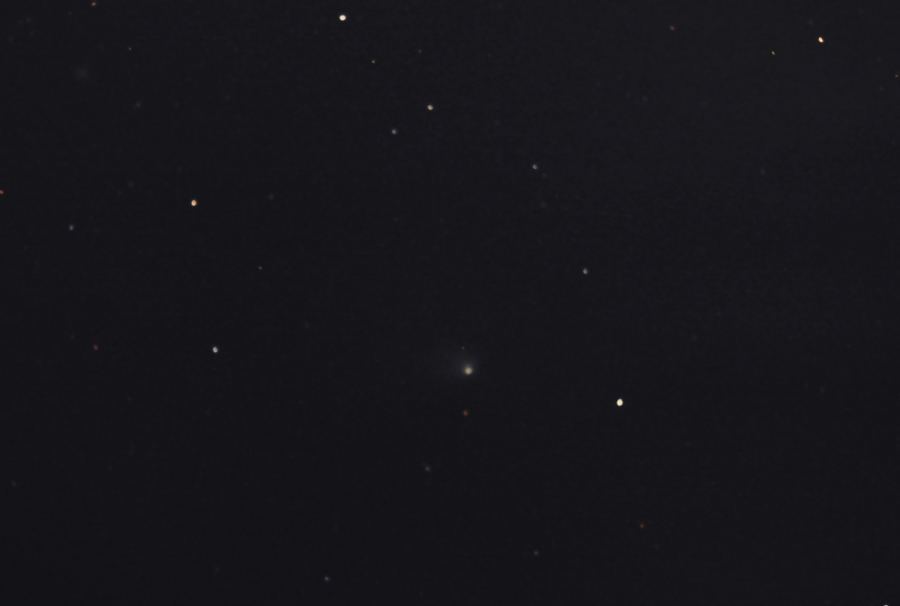| |
 |
Comet Hale-Bopp was discovered on
July 23, 1995 by two amateur astronomers, Alan Hale and Thomas Bopp. Observing
from different locations, both happened to be looking at the globular cluster
Messier 70 when they noticed a faint object, about magnitude 10.5, near the
cluster. Checking their charts and
catalogs, they learned that no other deep-sky object was in the vicinity, so
they realized the object they were observing was a comet.
One week later,
when I heard about the discovery, I observed the comet with my 18-inch Dobsonian
telescope. It was not very bright
at the time, but judging by its distance and its projected path, comet experts
were predicting that it could become a very bright comet when it approached the
earth in the spring of 1997.
This is my first
photograph of Comet Hale-Bopp, taken when it was still very far from
earth. The lens I used magnified
the image 10 times compared to the standard 50-mm lens used on many
cameras. The comet is small but
bright, and it has a fan-shaped tail. The round fuzzy object in the
upper left corner of the picture is the globular cluster Messier 14 in the
constellation Ophiuchus. At this
magnification, the cluster is too small to be resolved into individual stars.
|

